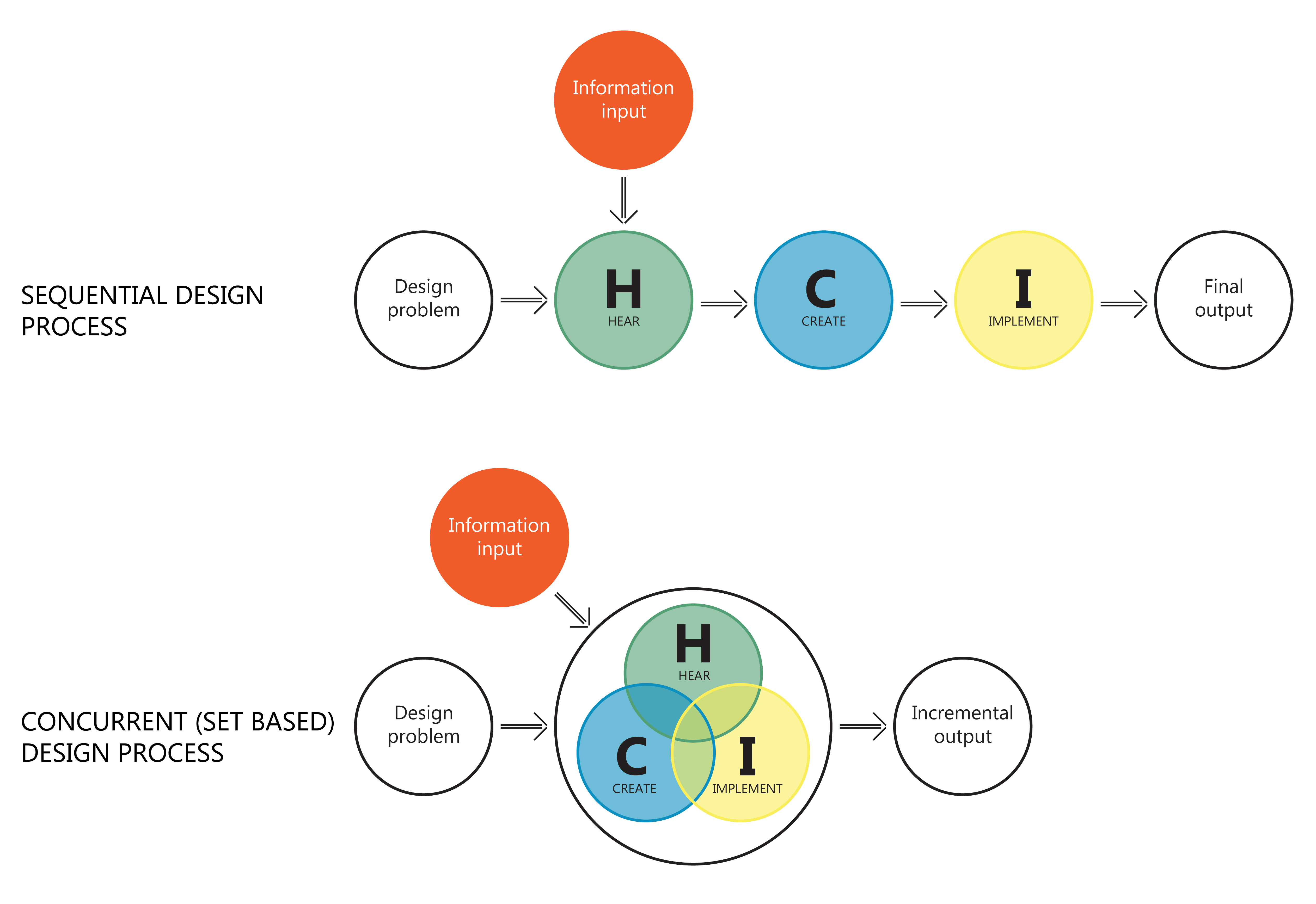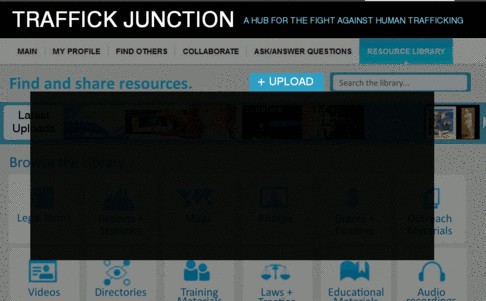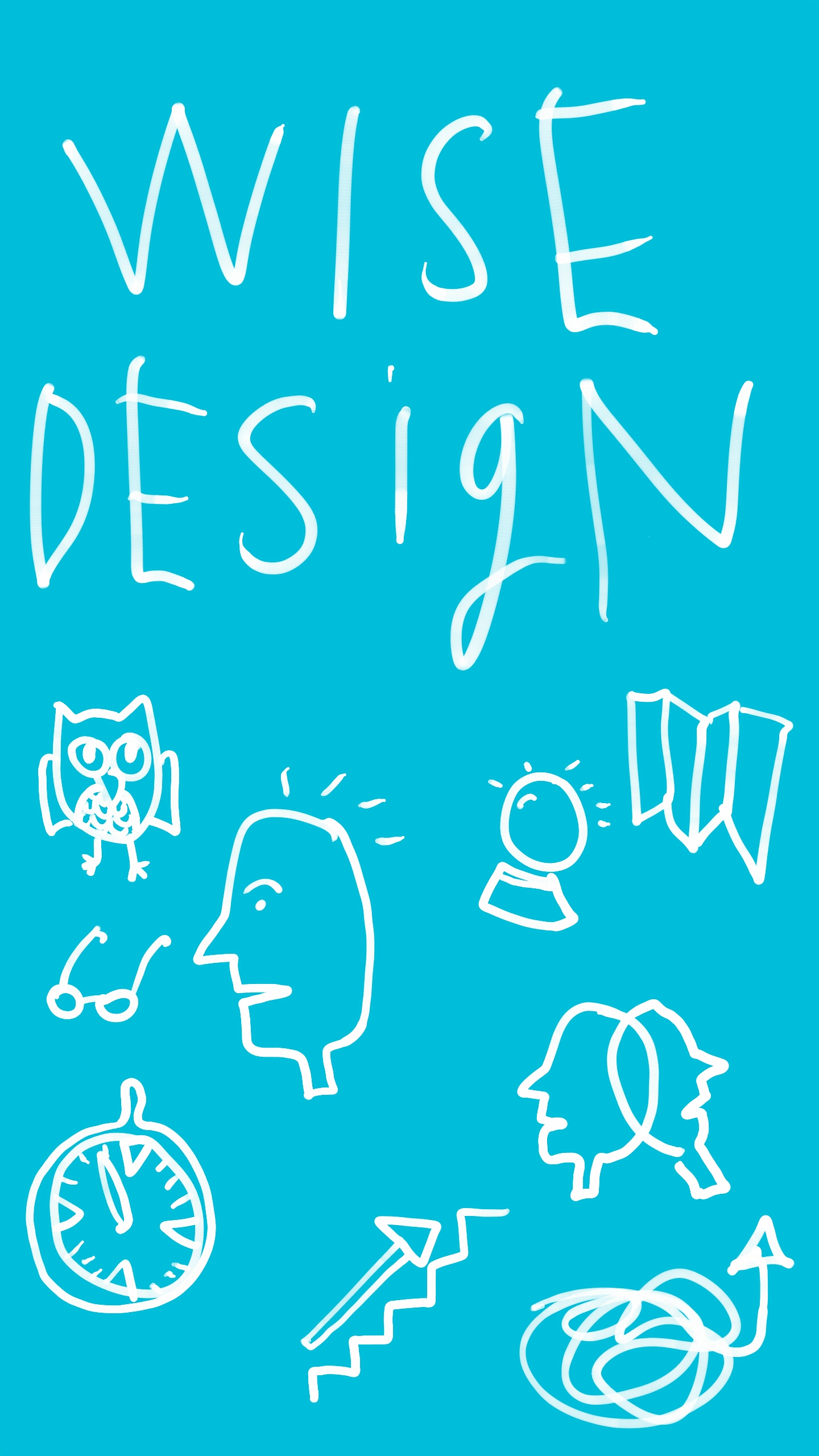I came across this blog piece by the Dutch group Am I a Designer, exploring the question of “Why change the design process?”
They resist an overly formalized, step-by-step design process — what they call a sequential design process — which makes the process seem clean and clinical. Instead, they push for a more cyclical, and messy version of the process, in which the designers end up spending a lot of time in iteration before moving on to final outputs.
Here are some of their very interesting thoughts — (read the whole piece here):
We are not claiming that iterative, concurrent processes are always better than sequential processes. That will depend on the designer, the context and the desired outcome of the design process. Or even more extremely stated: we believe in the power of the designer as a person and we think that the process used by this person is subsidiary to the designer itself, which might feel contradictive to our focus on a design/innovation process tool. We do claim that an iterative and set-based approach for a design process might increase your chances on a bigger and more sustainable impact and the viability and desirability of the outcome.
A significant part of the concurrent design method is that the individual engineer/designer is given much more say in the overall design process due to its collaborative nature. This property of the concurrent design method fits much better with the AIaD philosophy of the designer being more in control of the outcome, instead of only being the one at the end of the line forming someone else’s ideas into a physical product. Furthermore, giving the designer ownership improves the productivity of the designer and quality of the product. This claim is based on the assumption that people who are given a sense of gratification and ownership over their work tend to work harder and design a more robust product, as opposed to an employee that is assigned a task with little say in the general process (source 1).
Making the process also set-based means that the input of the different needed expertise comes more naturally then when the designer is confronted with user-feedback and business models only after he or she has already designed the product. Incorporating problem-research and entrepreneurial elements in an early stage of the design process also heightens the chances for success of the design itself. This method creates maybe less sexy physical products but more real implemented solutions that will change people’s lives for the better.
Set-based concurrent design also opens up the process of designing to important trends in other fields of ‘development approaches’. Examples are capacity building, frugal innovations or the lean startup approach, creating a process which takes you from start to finish of a solution-based process. The opening up of the process makes these trends therefor applicable in many situations and to many solutions like collaborations, websites, apps etc. – instead of only focusing on sometimes unsustainable physical solutions. Off course using concurrent design creates its own issues, such as the implementation of early design reviews, the dependency on efficient communication between designers, engineers and teams and opening up the design process (source 1). A concurrent design process usually requires knowledge about the process, an collaborative approach, trust in the outcome even though the process can be rocky and well-coordinated teams something that can be difficult in practice (source 2) and therefor these issues should definitely be addressed properly in our new training programs and tools.
Set-based concurrent design asks for a designer, who is a lot more all-round than we currently train our designers. They also need to become good interviewers, business developers and/or a lot more facilitative because a designer nowadays has to facilitate others to incorporate their skills, data and ideas into the process. The positive side of this is that this also means that this design process is not only for product-, fashion-, graphical designers etc. but can be applied by anyone, who wants to create a impactful solution, while looking at the desirability, feasibility and viability of the solution. And this can be someone who wants to innovate within an existing company or someone who wants to find a viable solution for a personal problem. Hopefully this also means that the design-process itself can create a bigger impact by being implemented in other fields as well. Although in order to reach an audience, which is completely unfamiliar with the design process, you will need a good facilitator/facilitative designer and/or tools, which describe the process in layman’s terms.
Because this approach is relatively new we think it is important to focus on training people how to perform concurrent and set-based design effectively. Furthermore, we have to provide them with the tools to guide this process, like tools for enhancing the communication between the team members. We also experienced first-handed that a iterative design approach based on learning by doing can be very intimidating by first time users. The process itself can seem very chaotic in the beginning and the experience of getting negative comments from users or other involved stakeholders can take away enthusiasm very soon. Simply: learning by doing hurts a lot more than learning from a book or a lecture and asks for different learning processes and teachers.
What have we learned from these two questions? Well for one: we need to explain the process behind Human Centered Design better to our collaboration partners like Sam and Sam her University to make sure that everybody understands what we are aiming for. Hopefully the new visualizations we presented in the previous blog will help with this. Writing this blog and having this discussion also delivered us with some useful input on the redesign of the new toolkit – so we now have an even better understanding what the tools should facilitate. And last but not least: the above described information is useful for designers and possible also for design-educators and design-researchers. However, someone that wants to innovate within an existing company or someone that wants to find a viable solution for a problem doesn’t care about this at all. So we will need to distinguish even more between different target groups of both the process itself and the newly developed toolkit to make sure that nobody is unnecessary overloaded with information that doesn’t contribute directly to their goals.
In the future we are therefor going to distinguish between the following different product segments for AIaD:
– Human Centered Design/ Innovation for designers,
– Design Thinking for educators,
– Problem solving/Human Centered Design/ Innovation for changemakers,
– and Human Centered Design/ Innovation for organizations like companies, governments, institutes and ngo’s




